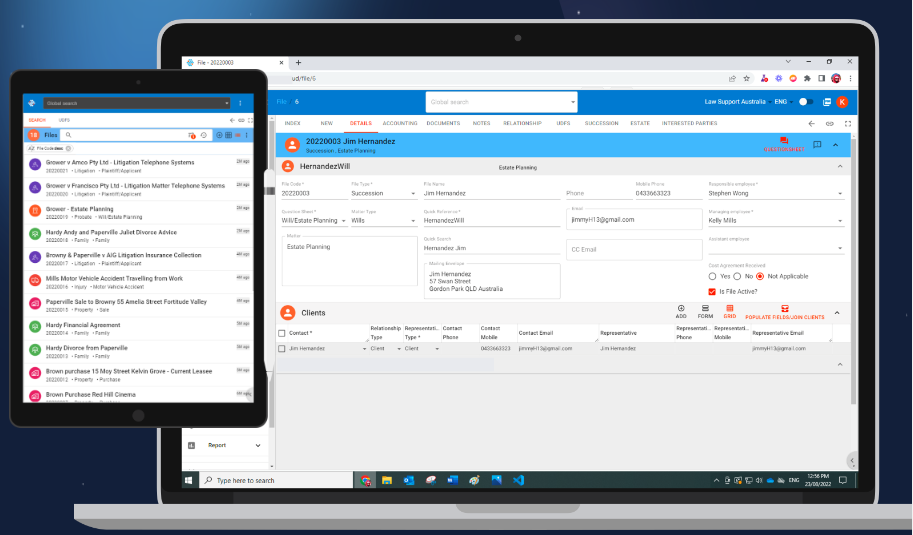In the fast-paced world of legal practice, efficiency is key to success. As legal professionals in Australia navigate through complex cases and ever-evolving regulations, the need for streamlined operations becomes increasingly vital. Fortunately, technological advancements have given rise to Legal Practice Management Software (LPMS), a powerful tool designed to enhance productivity, organization, and overall efficiency in legal practices. This article aims to provide a comprehensive guide on how to effectively utilize LPMS in the context of Australian legal practices.
Understanding Legal Practice Management Software:
Legal Practice Management Software in Australia is a specialized tool designed to assist Australian law firms and legal professionals in managing their workflow, documents, cases, and client interactions more efficiently. LPMS offers a range of features, including case management, document management, time tracking, billing, and client communication tools. The objective is to streamline administrative tasks, reduce errors, and enhance collaboration within a legal team.
Choosing the Right Legal Practice Management Software:
The first step in utilizing LPMS effectively is selecting the right software for your legal practice. With various options available in the market, it’s crucial to consider factors such as the size of your firm, specific practice areas, and budget constraints.
In Australia, legal professionals must also ensure that the chosen software complies with the country’s legal and data protection regulations. Look for LPMS that offers features tailored to the Australian legal landscape, such as integrations with local legal databases and compliance with the Legal Profession Uniform Law (LPUL) and other relevant regulations.
Implementation and Training:
Once you’ve selected the appropriate LPMS for your practice, successful implementation is vital. This involves migrating existing data, setting up user accounts, and customizing the software to suit the specific needs of your firm. Many LPMS providers offer training sessions or documentation to help users get acquainted with the software.
Training is a crucial aspect of successful LPMS utilization. Ensure that all members of your legal team are proficient in using the software to maximize its benefits. Training sessions should cover key features such as case and document management, time tracking, and billing processes. Investing time in thorough training will lead to a smoother transition and increased productivity in the long run.
Streamlining Case Management:
LPMS excels in simplifying case management, allowing legal professionals to organize, track, and prioritize cases efficiently. Utilize the case management features to create a centralized repository for case-related information, including client details, case history, deadlines, and key documents.
Automation is another powerful aspect of LPMS that can significantly enhance case management. Set up automated workflows for routine tasks, such as document generation, deadline reminders, and client communications. Automation not only reduces the risk of human error but also frees up valuable time for legal professionals to focus on more complex and strategic aspects of their work.
Document Management and Collaboration:
Efficient document management is a cornerstone of successful legal practices. LPMS offers robust document management features that allow legal professionals to create, store, and organize documents in a secure and easily accessible manner.
Collaboration tools within LPMS facilitate seamless communication among team members. This is especially valuable for firms with multiple locations or remote working arrangements. Legal professionals can collaborate on documents in real-time, share insights, and stay updated on the progress of cases.
Ensuring Compliance and Security:
Compliance with legal and data protection regulations is paramount, particularly in the highly regulated legal industry. LPMS can play a crucial role in ensuring compliance by offering features such as audit trails, secure document storage, and access controls.
Legal professionals in Australia must be vigilant about data security, given the sensitive nature of legal information. Choose an LPMS that employs robust encryption protocols, regular security audits, and compliance with industry standards. Regularly update the software to patch any potential security vulnerabilities and educate your team on best practices for data security.
Time Tracking and Billing:
Accurate time tracking and billing are essential for the financial health of any legal practice. LPMS simplifies the time tracking process by allowing legal professionals to record billable hours directly within the system. This not only reduces the chances of billing errors but also provides valuable insights into the profitability of each case.
Utilize the billing features of LPMS to generate invoices, track payments, and monitor outstanding balances. Many LPMS options integrate with accounting software, streamlining the financial management of your legal practice.
Client Communication and Relationship Management:
Maintaining strong client relationships is fundamental to the success of any legal practice. LPMS includes features that facilitate effective client communication and relationship management. Utilize the built-in communication tools to streamline email correspondence, schedule appointments, and provide clients with secure access to relevant case information.
The ability to keep clients informed and engaged throughout the legal process enhances transparency and builds trust. LPMS can also assist in maintaining a comprehensive client database, allowing for personalized interactions and a better understanding of client needs.
Conclusion:
Legal Practice Software has emerged as a transformative tool for legal professionals in Australia, offering a comprehensive solution to streamline operations and enhance efficiency. By carefully selecting the right software, investing in thorough implementation and training, and leveraging the diverse features of LPMS, law firms can position themselves for success in an increasingly competitive landscape.
As legal technology continues to evolve, staying abreast of new features and updates in LPMS is essential. Regularly reassess your firm’s needs, explore emerging technologies, and adapt your utilization of LPMS to ensure that your legal practice remains at the forefront of innovation and efficiency in the dynamic legal landscape of Australia.
















